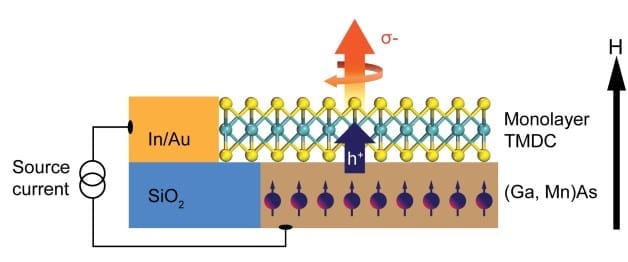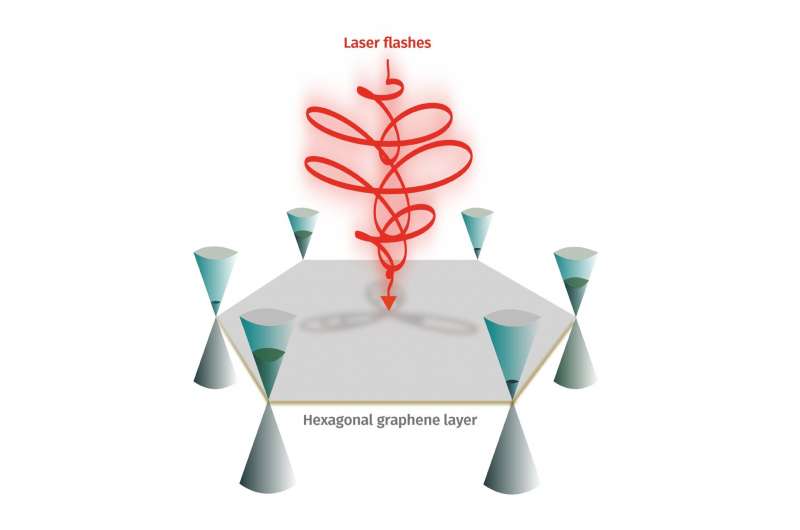
Scientists with the U.S. Department of Energy’s Lawrence Berkeley National Laboratory (Berkeley Lab) have taken a big step toward the practical application of “valleytronics,” which is a new type of electronics that could lead to faster and more efficient computer logic systems and data storage chips in next-generation devices.
As reported online April 4 in the journal Nature Nanotechnology, the scientists experimentally demonstrated, for the first time, the ability to electrically generate and control valley electrons in a two-dimensional semiconductor.
Valley electrons are so named because they carry a valley “degree of freedom.” This is a new way to harness electrons for information processing that’s in addition to utilizing an electron’s other degrees of freedom, which are quantum spin in spintronic devices and charge in conventional electronics.
More specifically, electronic valleys refer to the energy peaks and valleys in electronic bands. A two-dimensional semiconductor called transition metal dichalcogenide (TMDC) has two distinguishable valleys of opposite spin and momentum. Because of this, the material is suitable for valleytronic devices, in which information processing and storage could be carried out by selectively populating one valley or another.
However, developing valleytronic devices requires the electrical control over the population of valley electrons, a step that has proven very challenging to achieve so far.
Now, Berkeley Lab scientists have experimentally demonstrated the ability to electrically generate and control valley electrons in TMDCs. This is an especially important advance because TMDCs are considered to be more “device ready” than other semiconductors that exhibit valleytronic properties.
“This is the first demonstration of electrical excitation and control of valley electrons, which will accelerate the next generation of electronics and information technology,” says Xiang Zhang, who led this study and who is the director of Berkeley Lab’s Materials Sciences Division.
Zhang also holds the Ernest S. Kuh Endowed Chair at the University of California (UC) Berkeley and is a member of the Kavli Energy NanoSciences Institute at Berkeley. Several other scientists contributed to this work, including Yu Ye, Jun Xiao, Hailong Wang, Ziliang Ye, Hanyu Zhu, Mervin Zhao, Yuan Wang, Jianhua Zhao and Xiaobo Yin.
Learn more: Scientists Push Valleytronics One Step Closer to Reality
The Latest on: Valleytronics
[google_news title=”” keyword=”valleytronics” num_posts=”10″ blurb_length=”0″ show_thumb=”left”]
via Google News
The Latest on: Valleytronics
- A novel universal light-based technique to control valley polarization in bulk materialson April 24, 2024 at 9:52 am
Electrons inside solid materials can only take certain values of energy. The allowed energy ranges are called "bands," and the space between them, the forbidden energies, is known as "band gaps." Both ...
- Researchers control quantum properties of 2D materials with tailored lighton April 15, 2024 at 12:20 pm
A team of scientists has developed a method that harnesses the structure of light to twist and tweak the properties of quantum materials. Their results, published today in Nature, pave the way for ...
via Bing News










